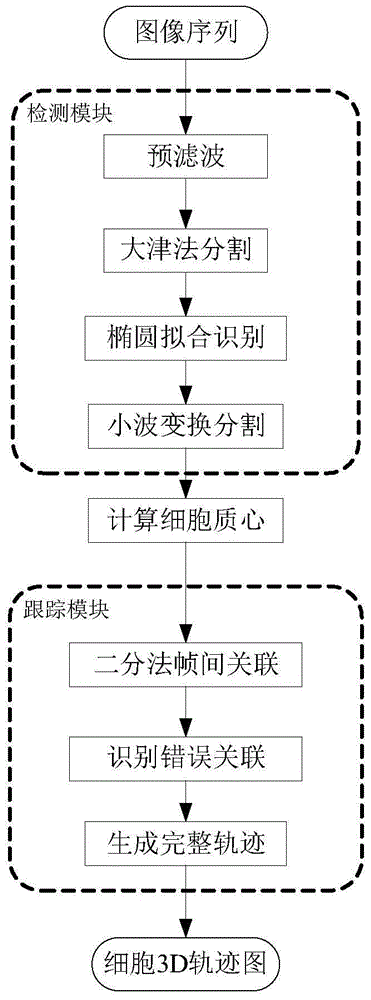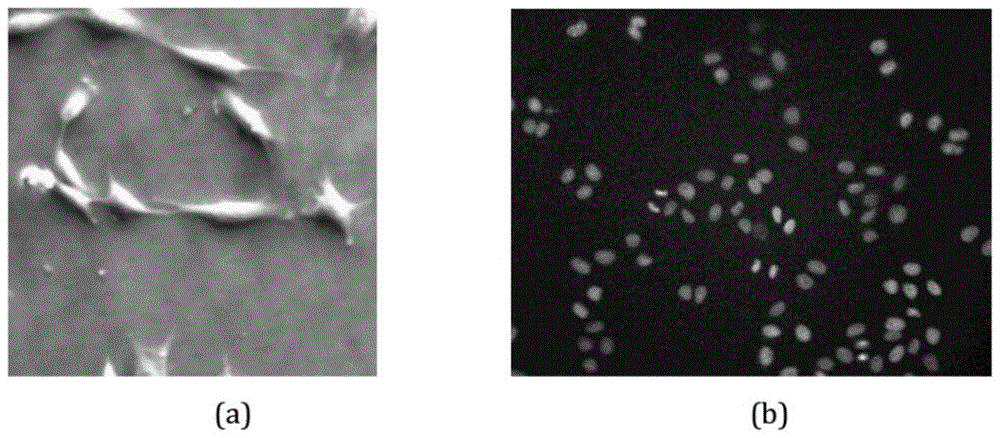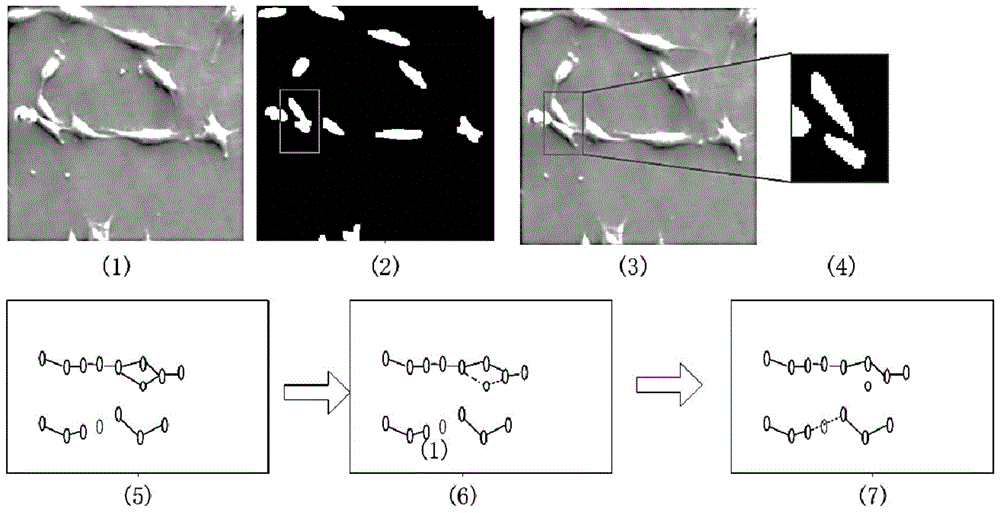Cell tracking method based on global and local optimum
A cell and local technology, applied in the field of image processing, can solve the problems of increased computational complexity, uneven brightness of cell imaging, manual initialization, etc., and achieve a universal effect
- Summary
- Abstract
- Description
- Claims
- Application Information
AI Technical Summary
Problems solved by technology
Method used
Image
Examples
Embodiment Construction
[0035] The present invention will be described in further detail below in conjunction with the accompanying drawings.
[0036] Such as image 3 The specific steps of this embodiment shown are as follows:
[0037] Step 1. Take images at equal time intervals under the microscope to obtain image sequences, such as image 3 As shown in (1), the image is denoised using Gaussian filtering. The microscope images of this embodiment were obtained under a phase contrast microscope OlympusUPLFLN4XPH4x.
[0038] Step 2. Fit the independent region of the initial segmentation by ellipse fitting, identify under-segmented cohesive cells, and then use the wavelet transform method to further segment, and finally calculate the centroid of all cells after segmentation as the tracking feature, specifically including:
[0039] Step 2.1) Use the Otsu method to segment to obtain a binary image, the value inside the cell outline is 1, and the value outside the outline is 0, such as image 3 as sho...
PUM
 Login to View More
Login to View More Abstract
Description
Claims
Application Information
 Login to View More
Login to View More - R&D
- Intellectual Property
- Life Sciences
- Materials
- Tech Scout
- Unparalleled Data Quality
- Higher Quality Content
- 60% Fewer Hallucinations
Browse by: Latest US Patents, China's latest patents, Technical Efficacy Thesaurus, Application Domain, Technology Topic, Popular Technical Reports.
© 2025 PatSnap. All rights reserved.Legal|Privacy policy|Modern Slavery Act Transparency Statement|Sitemap|About US| Contact US: help@patsnap.com



